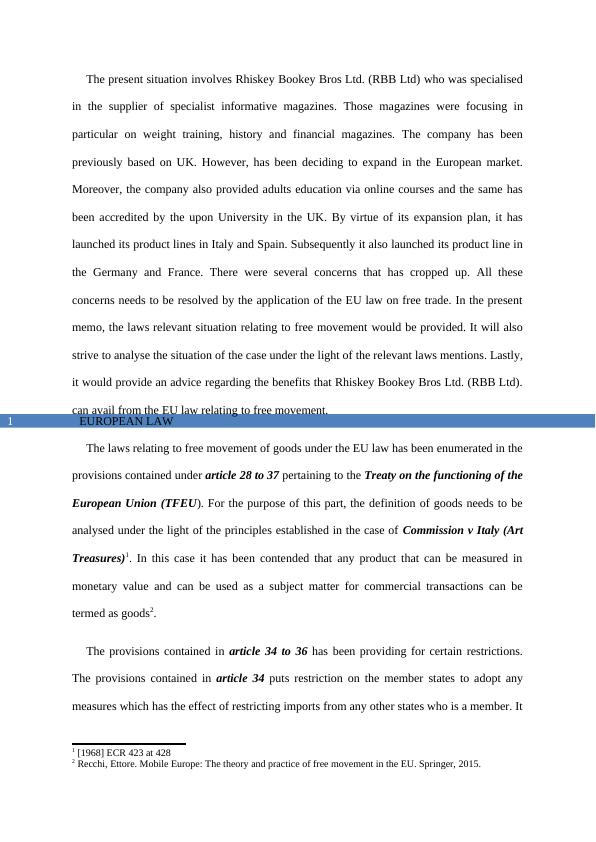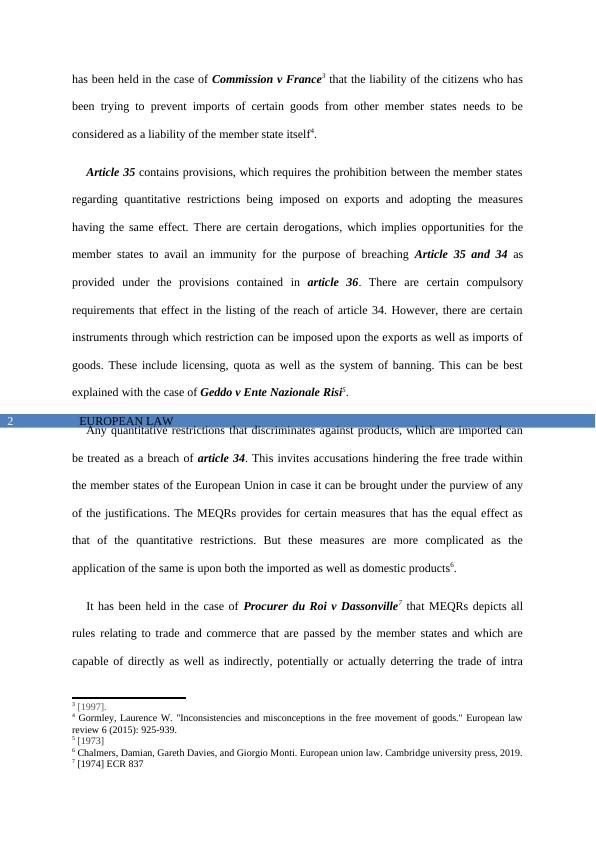ASSIGNMENT ON EUROPEAN LAW
The principles of the free movement of goods can be found in Articles 28 to 37 of the TFEU. This assignment focuses on the non-fiscal barriers, specifically Articles 34 to 36, which cover prohibitions on quantitative restrictions, MEQRs, and derogations from those restrictions.
9 Pages2115 Words21 Views
Added on 2022-10-04
ASSIGNMENT ON EUROPEAN LAW
The principles of the free movement of goods can be found in Articles 28 to 37 of the TFEU. This assignment focuses on the non-fiscal barriers, specifically Articles 34 to 36, which cover prohibitions on quantitative restrictions, MEQRs, and derogations from those restrictions.
Added on 2022-10-04
ShareRelated Documents
End of preview
Want to access all the pages? Upload your documents or become a member.
(PDF) Free Movement of Goods in the EU
|5
|630
|37
EU LAW. LAW. 1. : EU LAW. EU LAW. Name of the Student.
|5
|815
|6
Critically Analysis EU Law
|4
|507
|328
Free Movement of Goods | Assignment
|5
|605
|297
Free Movement of Goods Within the EU (Doc)
|5
|637
|121
EUROPEAN LAW. European Law Name Institution. 1. EUROPEA
|3
|424
|356



